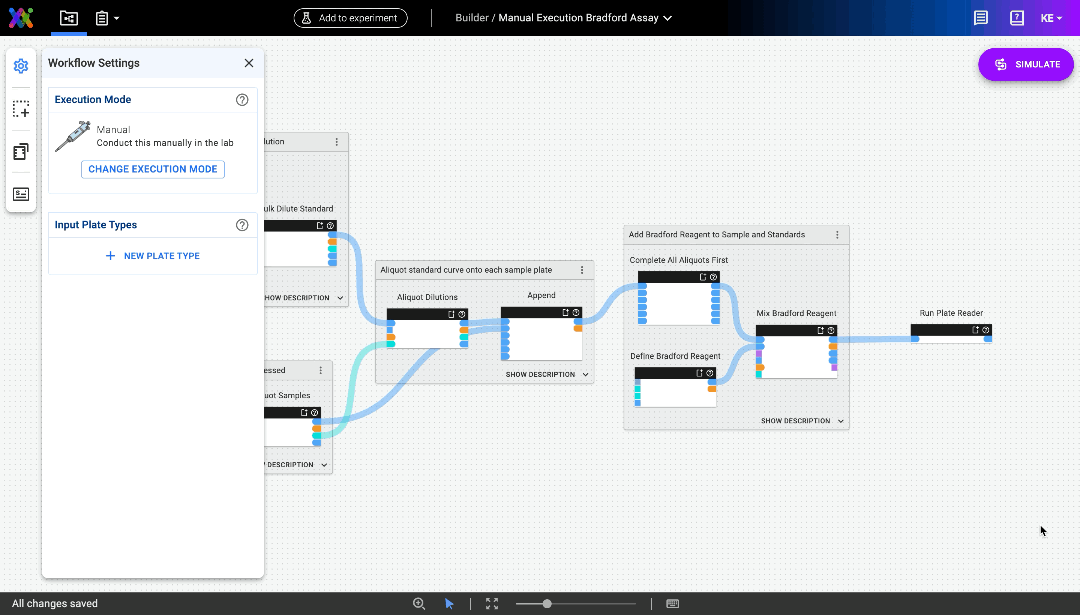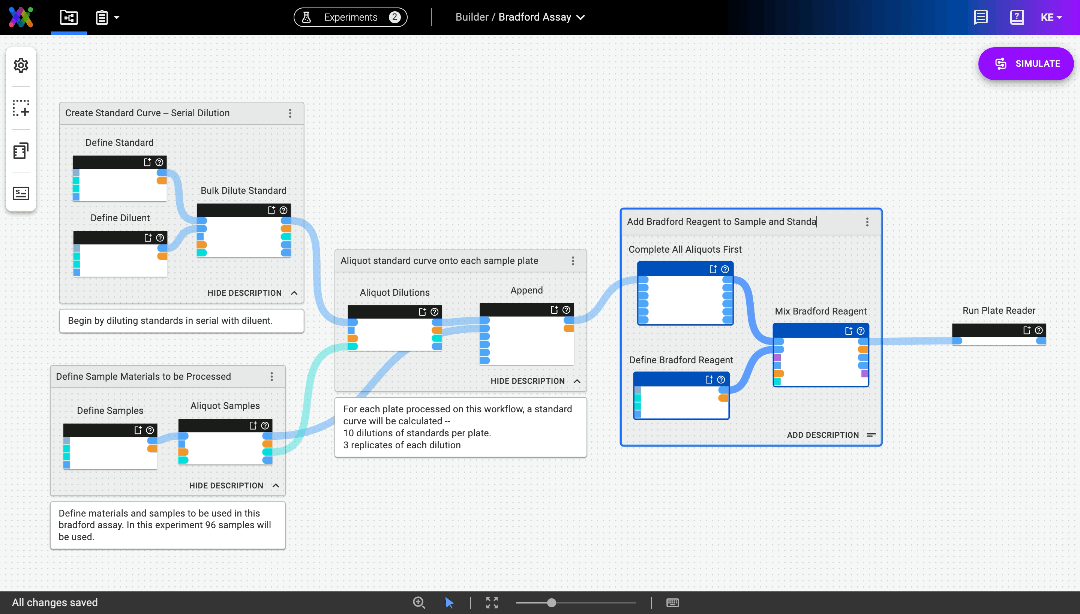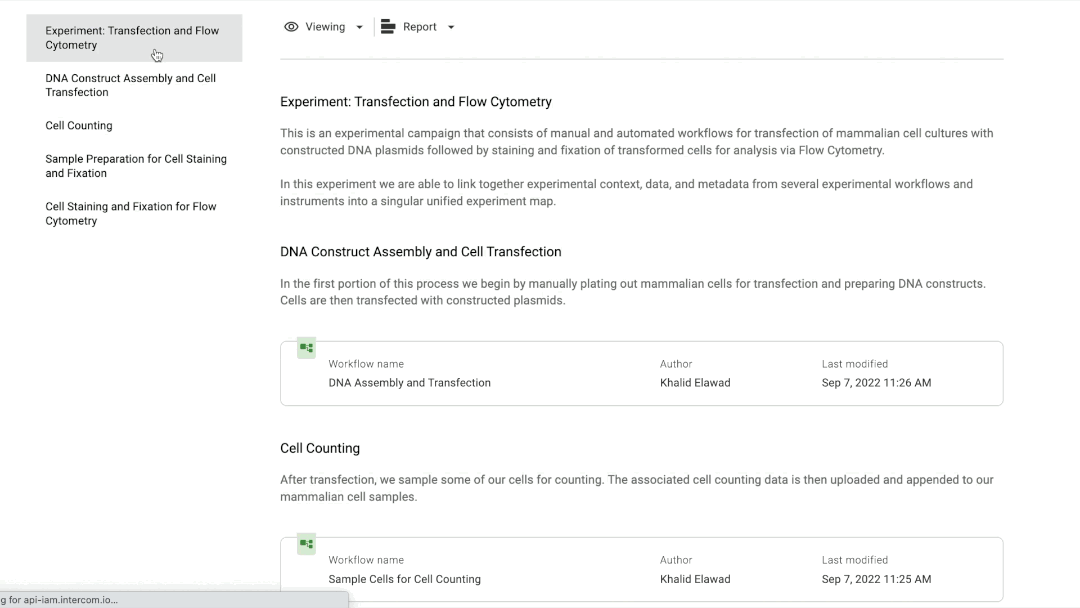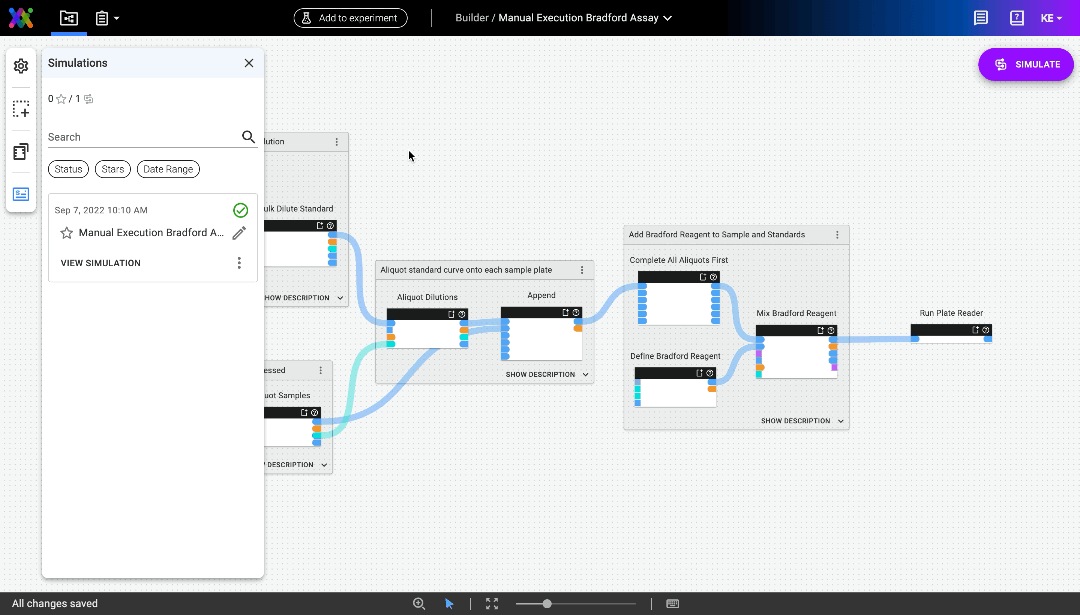Four more ways Synthace makes your experiments more likely to succeed
There are plenty of challenges in an experimental campaign, but let’s look at some givens and their impact on the scientists running them…
- Conducting experiments manually is a necessary but time-consuming process due to the need to document and execute by hand;
- Understanding the intent and context behind complex protocols, especially across a wider team, is a minefield;
- For the most complicated experiments, it’s easy to get lost trying to understand how different steps and protocols affect each other;
- Aligning data from different assays that relate to the same samples is difficult, error-prone, and time-consuming.
You probably already know that our Experiment Platform abstracts the experiment design and planning process, controls lab equipment, and aggregates your data. If you didn’t, now you do!
ELNs, LIMS, and even hand-written notes are the norms to try and capture the wealth of whats, hows, and whys surrounding incredibly complex campaigns. But that dispersal of key context and information means that, at any stage of an experiment, you could miss something that could be the difference between success and failure.
Today we’ve added features to the Synthace platform that address these experimental challenges directly, and we think you’re going to like them.
1. We’ve made it easier to do manual pipetting
Manual pipetting is a necessary part of lab life, but it’s slower and more difficult than it needs to be. Synthace can now calculate and plan your dilutions, mixture compositions, and mastermixes for you. When you want to make changes—however minor—to a protocol, you can simply tweak the previous run and simulate the outcome before setting foot in the lab.

That’s why we’ve introduced Manual Execution Mode to the Synthace platform to offload a lot of admin work by automatically capturing and documenting your manual experiments as you execute them.
Read more about manual pipetting
2. We’ve made it easier to capture experimental context
Intent, thinking, and iterations are all important parts of an experiment’s success. But it’s all too common for it to be scattered across multiple sources. Is it in the ELN? A Lab Journal? The chicken scratch notepad of a coworker? Who knows!

With Synthace, you can group and annotate the different parts of your experiment so that everyone else—including your future self—will know what's going on, and why.
Read more about experimental context
3. We’ve made it easier for you to see the big picture
Planning, executing, and recording what you’re doing, alongside actually doing it, takes time away from scientific activities. And it limits the scale and complexity of your experiments by sucking up that precious lab time for admin.

Synthace’s Experiment Map puts everything related to your campaign in a single view, including your workflows, simulations, executions, and all associated data outputs. Plus you can view and download data from multiple, parallel executions in just a few clicks.
Read more about experiment mapping
4. We've made it easier for you to align and structure your experimental data
Sifting through raw data and trying to get exactly what you want out of it takes up far more time than it should. It saps your focus - and energy - when it should be as easy as waving a magic wand.

Well, now Data Structuring controls in Synthace eliminate data formatting headaches and help you get to insight faster. You can now choose how your experimental outputs are structured so you can capitalize on Synthace experiment data in your third-party analysis tools.
Read more about experimental data
Okay, but how does this all work in practice?
We’re glad you asked.
Our resident dynamic duo of biology - Dr. Nuno Leitão and Dr. Sten Libregts - have put the latest updates to the test in a variety of experimental campaigns and compiled their findings.
We’ll be sharing these over the coming weeks so you can see the realities of what these updates mean for designing, planning, executing, and analyzing your experiments with Synthace.
Stay tuned for more.


